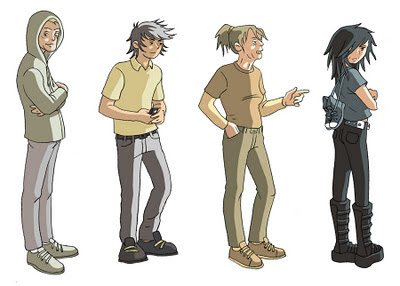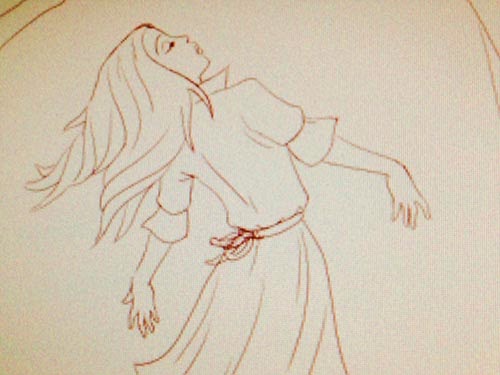Skint! Artwork
We had a fantastic time launching Skint! last month at the International Adult Literacies Conference in Stirling. Members of the Scottish Youth Theatre re-enacted a small part from the book/play, with our artwork as a backdrop, and it was amazing. The actress playing Carly actually looked like Carly in the book (strange to see as the drawings were created long before).
As part of the launch we gave a short speech, along with Gowan Calder who wrote the script, talking about how the project was put together. It started with Sandra sketching out a few characters while Gowan was busy thinking about the script. Here are some of them:

In the book, the character gallery ended up like this (again, selected characters here only):

Because of the unusual nature of the project we decided to proceed slowly at first, with Gowan producing a couple of very rough pages of script, just to get a feel for what the images would bring, and thus know what she could leave out in the script, in terms of direction, character and location description and so forth; as well as allowing everyone to grasp the interaction between characters and between the text and image pages.
Then Gowan worked towards a final draft from which rough layout pages were created. These had to be approved before any final artwork could be started. This stage was actually quite straightforward and we completed the layout for the entire book over a period of four weeks. Skint! is quite an unusual and experimental book in many ways, as the script is on one page and the artwork is on the facing page, much like in a traditional illustrated book. It is designed mainly to be read in a group for role playing: although it works well too for individual reading. We produced the graphic novel pages so that they enhance the reading of the script and set the scenes, as well as developing the characters.

The final pages were pencilled and then directly coloured on computer (after a clean up of the pencils in Photoshop). For the Louis graphic novels, Sandra had been painting by hand with acrylic inks and then inking by hand over the colouring, so this was a nice change.


One of the finished panel images, one of our favourites, from Jamie’s story:





